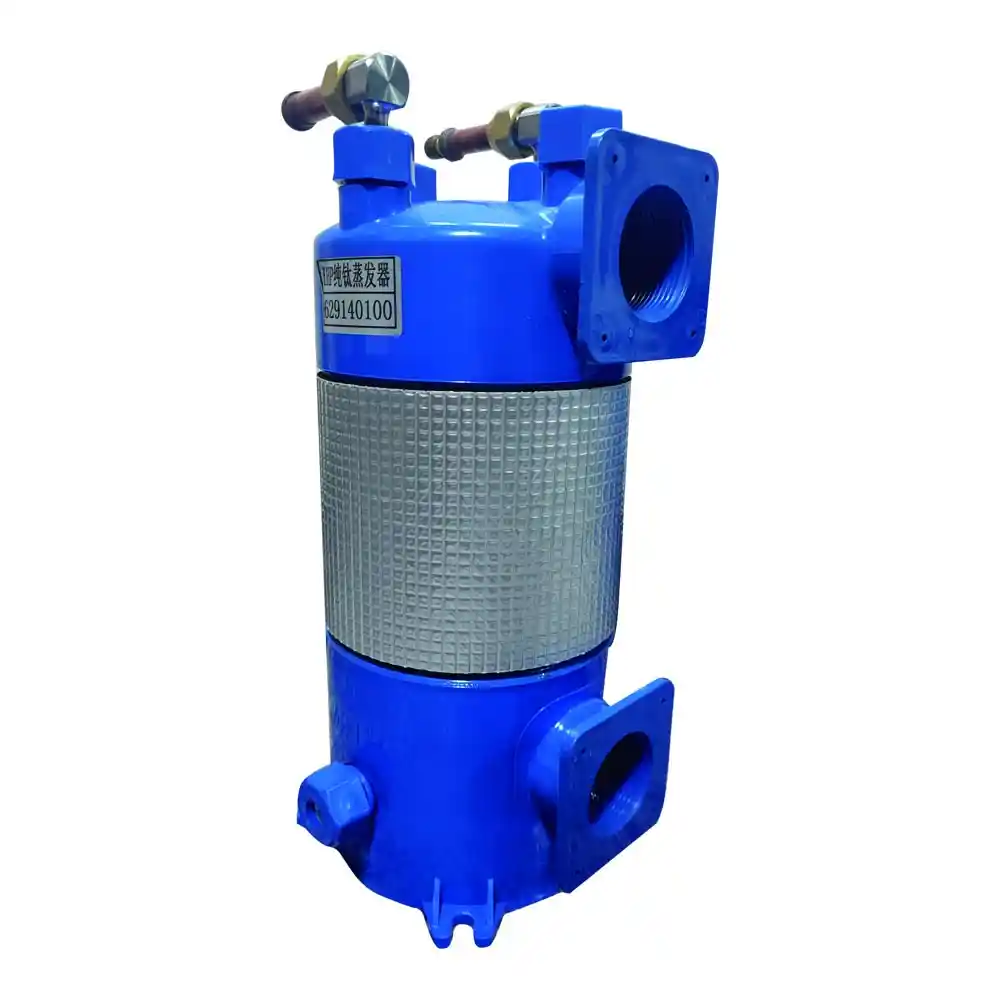Introduction
Heat exchanger component manufacturing is a critical step in the raw material preparation process for the production of titanium coil heat exchangers with PVC shells. This article focuses on the manufacturing of various components that contribute to the functionality and performance of the heat exchanger unit. The components include the titanium coils, PVC shells, headers, tubesheets, and other supporting elements. This comprehensive guide provides a detailed overview of the manufacturing process, techniques, and considerations for each component.
1. Titanium Coil Manufacturing
Titanium coils are the core components of a titanium coil heat exchanger. The manufacturing process involves several steps to transform raw titanium material into functional coils. The following are the key stages in titanium coil manufacturing:
1.1 Titanium Material Selection
High-quality titanium material with suitable characteristics is selected for coil manufacturing. Factors such as corrosion resistance, mechanical properties, and compatibility with the working fluid are taken into account during material selection.
1.2 Coil Forming
Titanium sheets or strips are formed into the desired shape, typically a helical coil configuration. This process can be achieved through various techniques such as roll forming or tube bending. Precise forming ensures the proper geometry and dimensions of the coils.
1.3 Welding or Brazing
In some cases, multiple titanium strips or sheets are welded or brazed together to create longer coils. The welding or brazing process ensures the integrity and strength of the coil joints, enabling them to withstand the operating conditions.
1.4 Surface Treatment
After the coils are formed and joined, they undergo surface treatment to enhance their corrosion resistance and improve heat transfer efficiency. Surface treatments may include pickling, passivation, or coating with protective layers.
2. PVC Shell Manufacturing
The PVC shell provides structural support and protection for the titanium coils in a titanium coil heat exchanger. The manufacturing process for the PVC shell involves the following steps:
2.1 PVC Material Selection
PVC (Polyvinyl Chloride) material with the desired properties, including strength, durability, and chemical resistance, is selected for shell manufacturing. PVC material in a blue color is commonly chosen for its aesthetic appeal.
2.2 Shell Formation
The PVC material is processed to form the shell structure. This can be achieved through techniques such as injection molding or extrusion. The shell is designed to accommodate the titanium coils and allow for proper fluid flow within the heat exchanger.
2.3 Reinforcement and Assembly
To enhance the structural integrity of the PVC shell, reinforcement elements such as ribs or brackets may be incorporated during the manufacturing process. These reinforcements provide additional strength and stability to the shell. The assembly of the PVC shell may involve attaching headers, tubesheets, and other necessary components.
3. Header and Tubesheet Manufacturing
Headers and tubesheets are vital components of a heat exchanger as they facilitate the distribution and collection of fluid streams. The manufacturing process for headers and tubesheets involves the following steps:
3.1 Material Selection
Materials with suitable properties, such as stainless steel or PVC, are selected for manufacturing headers and tubesheets. The material choice depends on factors such as compatibility with the working fluid, mechanical strength, and corrosion resistance.
3.2 Machining and Fabrication
The selected materials are machined and fabricated to create the desired shape and dimensions of the headers and tubesheets. Machining processes such as drilling, milling, and turning are employed to achieve the required specifications.
3.3 Gasket and Seal Integration
Headers and tubesheets are designed to accommodate gaskets and seals to ensure leak-tight operation. During the manufacturing process, provisions are made to integrate gasket grooves or sealing surfaces to create reliable seals between components.
Conclusion
The manufacturing of heat exchanger components in the raw material preparation stage is a crucial step in producing high-quality titanium coil heat exchangers with PVC shells. This article has provided an overview of the manufacturing processes involved in producing titanium coils, PVC shells, headers, and tubesheets. Each component undergoes specific procedures to achieve the desired characteristics and functionality. By ensuring precise manufacturing techniques and material selection, the resulting heat exchanger components contribute to efficient heat transfer, durability, and overall performance of the titanium coil heat exchanger system.
Table 1: Raw Material Preparation – Heat Exchanger Component Manufacturing Summary
| Component | Manufacturing Steps |
|---|---|
| Titanium Coils | 1. Titanium Material Selection |
| 2. Coil Forming | |
| 3. Welding or Brazing | |
| 4. Surface Treatment | |
| PVC Shells | 1. PVC Material Selection |
| 2. Shell Formation | |
| 3. Reinforcement and Assembly | |
| Headers and Tubesheets | 1. Material Selection |
| 2. Machining and Fabrication | |
| 3. Gasket and Seal Integration |
Note: The table provides a summary of the manufacturing steps for each heat exchanger component. Please refer to the corresponding sections for detailed explanations.
This comprehensive guide offers insights into the manufacturing processes involved in creating heat exchanger components during the raw material preparation stage. By understanding the intricacies of each component’s manufacturing, engineers and manufacturers can ensure the production of high-quality titanium coil heat exchangers with PVC shells.


